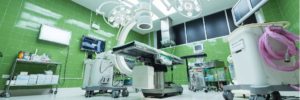About Growth Plate Fractures and Injuries
 A child’s bones are at risk for an injury known as a growth plate fracture. Growth plate fractures can occur as a result of a traumatic event, such as a car crash. Growth plates are made of developing cartilage tissue near the ends of bones. They help regulate and determine the length and shape of mature bones. Growth plates are the last portion of bones to harden and fracture easily. In fact, a child’s bones may be weaker than the ligament tissues that connect the bones.
A child’s bones are at risk for an injury known as a growth plate fracture. Growth plate fractures can occur as a result of a traumatic event, such as a car crash. Growth plates are made of developing cartilage tissue near the ends of bones. They help regulate and determine the length and shape of mature bones. Growth plates are the last portion of bones to harden and fracture easily. In fact, a child’s bones may be weaker than the ligament tissues that connect the bones.
A child with an injury from a car accident or fall should see a doctor right away. They will want to get proper treatment before healing begins. However, the fracture will not need to stay in a cast as long as an adult fracture would in order to heal.
If your child is suffering from a growth plate fracture, you may benefit from a skilled Seattle personal injury attorney. At Premier Law Group, we know how overwhelming these injuries can be. Call 206.285.1743 today to start your free consultation.
Statistics About Children and Fractures
Approximately 22% of childhood fractures are growth plate fractures, which often require immediate medical attention. The long term consequences of these injuries may include crooked limbs or limbs of unequal length.
Any children who are still growing are at risk for a growth plate injury. These injuries occur most often in adolescents. Growth plate fractures also occur twice as often in boys as in girls. A child who experiences an injury resulting in a visible deformity, persistent or severe pain, or an inability to move or put pressure on a limb should see a doctor. The type of treatment necessary will depend on the fracture.
Growth plate fractures must be taken care of properly to ensure proper long term results. In some cases, a bony bridge will form, preventing the bone from getting longer or causing the bone to cure. However, surgeons have developed techniques to remove the bony bar and insert fat, cartilage, or other materials to prevent it from reforming.
How Do Growth Plate Fractures Occur?
Growth plate fractures can result from a variety of trauma. Seemingly safe activities such as sledding, biking, and sports can cause a fracture of your child’s growth plate.
These types of injuries may also result from repetitive actions, such as training for gymnastics, pitching a baseball, and even riding a bike for long distances.
Signs & Symptoms of a Growth Plate Fracture
The signs and symptoms of a growth plate fracture are the same signs and symptoms of any other fracture. This includes:
- pain
- swelling
- possible deformity.
Your child’s doctor will be able to determine if an injury involves a fracture into the growth plate.
Growth Plate Fractures Diagnosis and Treatment
 X-rays do not always reveal a growth plate fracture. However, most of the time, only splinting or casting is necessary. This is followed by resting the extremity. If the bones are out of place, they are put back together in correct alignment by reduction. The two types of reductions are:
X-rays do not always reveal a growth plate fracture. However, most of the time, only splinting or casting is necessary. This is followed by resting the extremity. If the bones are out of place, they are put back together in correct alignment by reduction. The two types of reductions are:
- A closed reduction: Moving the bones back into place without operating, or making any incision while the skin remains closed.
- An open reduction. This involves surgery, and occasionally plates, pins, or screws. This is done under general anesthesia and the bones are immobilized by a cast or splint with prolonged rest of the arm or leg
The Effects of Growth Plate Fractures on Bone Growth
Most of the time, the fractures heal without any issues, even if they occur in the growth plate. However, sometimes the break results in a crooked bone, or crooked healing, which can cause future problems and long term damage.
One issue to be aware of is a condition known as “growth arrest,” which is when the bone simply stops growing. This can result in one leg or arm being shorter than the other. When one leg is shorter than the other, it can lead to further problems, such as hip pain, lower back injury, and possible chronic pain for life. If your child has a growth plate fracture at their knee, they are likely to experience growth arrest. They can even develop crooked legs due to the additional damage to nerves and blood vessels in that area.
In some cases, a growth plate fracture causes the bone to accelerate growth, which also results in unequal limbs. A ridge may also form along the fracture line and interfere with normal development. If the bone breaks through the skin and becomes infected, the higher the chance of complication of the growth plate fracture.
It is important that you stay in contact with your child’s doctor. You should also lookout for strange growths, continuous pain, and curving of bones. Also, have regularly scheduled follow ups with your doctor.
Contact Our Seattle Personal Injury Lawyers
 Growth plate fractures can be life changing injuries. As such, you deserve a growth plate fracture attorney with experience on your case. At Premier Law Group, we care about client satisfaction. When you call, you will speak directly with one of our attorneys. We will help guide you and provide you with honest answers to any questions you may have.
Growth plate fractures can be life changing injuries. As such, you deserve a growth plate fracture attorney with experience on your case. At Premier Law Group, we care about client satisfaction. When you call, you will speak directly with one of our attorneys. We will help guide you and provide you with honest answers to any questions you may have.
Furthermore, we will help protect the health, emotional well being, and finances of you or your loved ones. We will also give you useful resources. At Premier Law Group, we want everyone who contacts us to have the information they need about their legal options.
Contact Premier Law Group to schedule a free case review of your growth plate fracture case today. Call 206.285.1743. And remember, you do not have to pay a fee unless we win your case!
